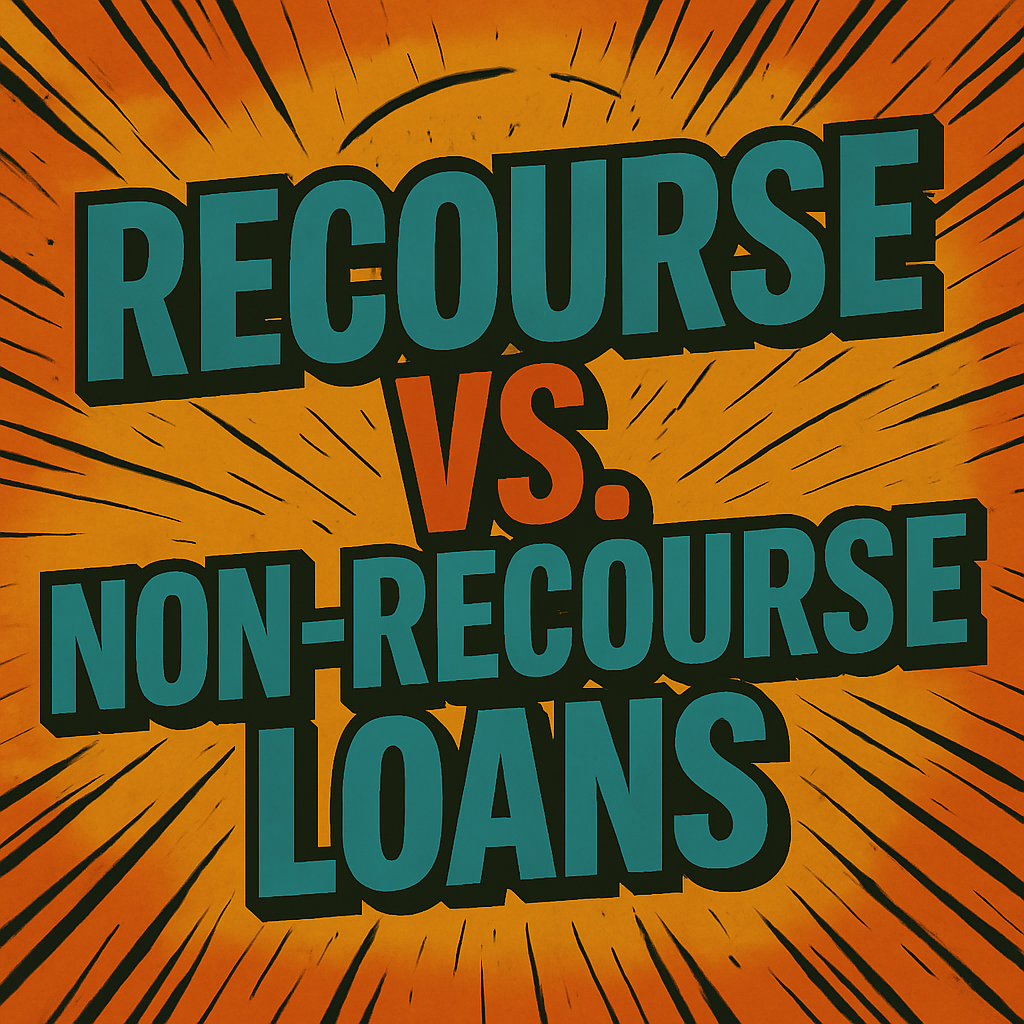Recourse vs. Non-Recourse Loans
“One follows the loan, the other follows you home”

The Core Idea: Recourse vs. Non-Recourse
When a business takes out a loan, lenders want assurance they’ll be repaid.
The difference between recourse and non-recourse loans is about what the lender can claim if the borrower defaults:
Recourse Loan:
If you default, the lender can go after both the collateral and your other assets (business or personal, depending on the guarantee).
Think: “The loan follows you, not just the property.”- Non-Recourse Loan:
If you default, the lender’s claim stops at the collateral only. They can seize the asset pledged for the loan, but they cannot pursue your other assets.
Think: “The deal ends with the collateral.”
For Business Owners: This determines how much of your personal or company assets are at risk if things go wrong.
For Lenders: It sets the risk profile of the loan, which influences rates, collateral requirements, and deal terms.
For Decision Makers: Knowing the distinction helps you weigh the trade-off between cost of capital and risk exposure.
📋 Key Features: Recourse vs. Non-Recourse Loans
| Feature | Recourse Loans | Non-Recourse Loans |
|---|---|---|
| Lender Rights | Can seize pledged collateral and pursue additional borrower assets. This can include drawing on a personal guarantee (putting the owner’s personal wealth at risk), tapping into company bank accounts, or pursuing other assets through legal action. | Recovery limited to the specific collateral securing the loan; no claim on other assets. |
| Common Uses | Small business loans, equipment loans, working capital loans, most bank financing. | Large commercial real estate, project finance, securitized loans. |
| Advantages | Lower interest rates, easier approval, smaller collateral requirement. | Liability capped — personal or unrelated business assets are shielded. |
| Risks to Borrower / Lender | Greater personal or corporate liability if the business cannot repay. | Higher risk of loss for lender if collateral value falls short. |
| Trade-Off for Borrower | More liability exposure but cheaper and easier to obtain financing. | Higher rates, stricter underwriting, and larger equity or collateral requirements. |
Practical Examples
Recourse Example: A trucking company finances new rigs with a bank loan secured by the trucks and backed by the owner’s personal guarantee. If the company defaults and the trucks sell for less than the outstanding loan, the bank can pursue the owner’s personal assets for the shortfall.
Non-Recourse Example: A developer finances a shopping center with a non-recourse mortgage. If the project fails and the lender forecloses, the lender can only take the shopping center itself — not the developer’s other properties or accounts.

Additional Key Points
A few nuanced but important points on Recourse vs. Non-Recourse Loans.
These often come up in negotiations or practical use cases and aren’t always obvious:
“Carve-Out” Exceptions in Non-Recourse Loans
- Even in a non-recourse loan, lenders often include exceptions (a.k.a. “bad boy carve-outs”).
- If the borrower commits fraud, misrepresents facts, misuses funds, or engages in willful misconduct, the lender can pierce non-recourse protection and pursue the borrower personally.
So, non-recourse isn’t absolute immunity.
Impact on Interest Rates and Terms
- Recourse loans generally come with lower interest rates and easier approval, because the lender has broader rights.
- Non-recourse loans are typically more expensive, require higher equity contributions, and involve stricter underwriting, since the lender takes on more risk.
Collateral Type Matters
- Non-recourse loans are most common when collateral is self-liquidating and stable (e.g., commercial real estate, infrastructure).
- For businesses with intangible or fast-depreciating assets, lenders nearly always demand recourse, since collateral value is less reliable.
Borrower Sophistication & Deal Size
- Non-recourse structures are usually limited to large, institutional-scale deals.
- Small and mid-sized businesses rarely get full non-recourse terms outside of very specific asset-based financing.
Balance Sheet & Risk Management
- Recourse debt can impact the owner’s personal balance sheet (if personally guaranteed).
- Non-recourse debt keeps liability isolated, which is attractive for investors, partnerships, and corporate structuring.
Refinancing and Exit Strategy
- Lenders refinancing a non-recourse loan will pay close attention to collateral performance and valuations.
- With recourse loans, personal or corporate guarantees can sometimes bridge weaker collateral performance.
Bottom line for business leaders:
The difference between recourse and non-recourse loans goes far beyond whether the lender can take your collateral.
It defines:
Where the risk stops:
In recourse loans, liability can extend to your personal wealth or the broader business. In non-recourse loans, risk is capped at the pledged asset.What exceptions apply:
Even “non-recourse” loans often include carve-outs for fraud, misrepresentation, or misconduct. Understanding these fine-print exceptions is essential before signing.How it impacts cost and flexibility:
Recourse loans usually come with lower rates, easier approvals, and smaller equity requirements — but at the price of broader liability. Non-recourse loans cost more and require stronger collateral, but they shield other assets and improve risk isolation.Strategic implications:
The choice shapes how you manage growth, partnerships, and exits. Non-recourse financing can make projects more attractive to outside investors by containing liability. Recourse financing can provide cheaper, quicker access to capital when you’re confident in performance and comfortable with risk.
In practice, the right choice depends on your risk tolerance, collateral strength, and long-term goals

